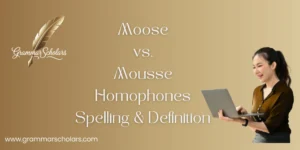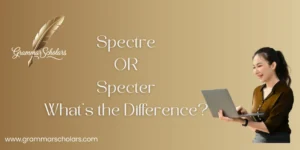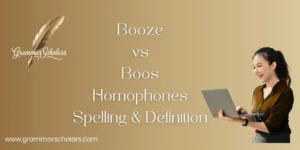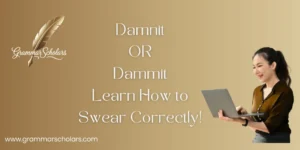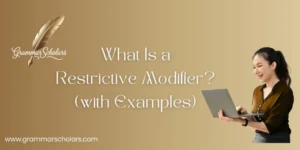There’s a striking power in a well-placed, short, sharp sentence. Over the years of writing, I’ve learned that few things deliver a more powerful punch than a well-aimed staccato sentence that breaks through the surrounding noise. These aren’t just choppy lines thrown together; they’re part of a deliberate technique. One that slices through fluff, lands with unforgettable impact, and leaves readers thinking. While long, flowing sentences may soothe or even bore a reader, staccato ones offer brisk phrases that jolt the senses, emphasize emotion, and accelerate momentum. Used with thoughtful care, they inject drama, urgency, and clarity into every line of prose. Staccato sentences deliver impact – short, sharp bursts of prose that cut through fluff, spark emotion, and inject urgency into your writing.
Good writing depends not just on words, but on rhythm, almost like poetry. The structure of your lines shapes how readers experience a message. A skilled writer understands when to let a sentence breathe and when to strike hard. This guide explores the way these sentences work, when to use them, and how to master their overall effect.
I’ve tested them in everything from blogs to scripts, and the results are clear: when rhythm matters, staccato wins.
What Is a Staccato Sentence?
A staccato sentence is a brief, often abrupt sentence that delivers a single idea with force. The term “staccato” comes from music, where it means notes played sharply and detached. In writing, it creates a similar effect: crisp, standalone statements that demand attention.
Example:
“He ran. Stumbled. Fell.”
These sentences are typically short-sometimes just one word-and are used to create emphasis, tension, or rhythm.
Grammar and Structure of Staccato Sentences
Staccato sentences can be:
- Complete sentences:
“She left.” - Fragments:
“Gone.”
While fragments are technically incomplete sentences, they can function effectively in creative writing to convey emotion or urgency.
Common features:
- Length: 1–5 words
- Structure: Often subject-verb or single-word
- Punctuation: Typically ends with a period for emphasis
Examples of Staccato Sentences in Different Contexts
Narrative Fiction:
“Rain. Thunder. Silence.”
Creates atmosphere and tension.
Dialogue:
“Stop. Don’t move.”
Conveys urgency and command.
Marketing Copy:
“Fresh. Fast. Delivered.”
Emphasizes key selling points.
Nonfiction:
“Research. Analyze. Conclude.”
Outlines a process succinctly.
Why Writers Use Staccato Sentences: The Psychological Impact
Staccato sentences:
- Create tension: Short sentences quicken the pace, building suspense.
- Emphasize points: They highlight key ideas or actions.
- Reflect emotion: Mimic rapid thoughts or speech during stress or excitement.
- Enhance readability: Break up dense text, making it more digestible.
Psychological studies suggest that shorter sentences are easier to process and remember, making them effective for impact.
Staccato Sentences vs. Sentence Fragments
| Feature | Staccato Sentence | Sentence Fragment |
| Complete thought | Often | No |
| Grammatical | Yes | No |
| Usage | Emphasis, rhythm | Informal, stylistic |
| Example | “He ran.” | “Running through.” |
While both are short, staccato sentences are usually complete thoughts, whereas fragments lack a subject or verb but can be used stylistically.
When to Use Staccato Sentences (And When Not To)
Use when:
- Conveying urgency or action
- Emphasizing key points
- Reflecting a character’s emotional state
- Breaking up long paragraphs
Avoid when:
- Writing formal or academic texts
- Overusing, which can disrupt flow
- The tone requires elaboration or nuance
Staccato Sentences in Literature: Real-World Examples
Ernest Hemingway:
“He came. He saw. He conquered.”
Hemingway’s style often employed short, declarative sentences to convey action and clarity.
Cormac McCarthy:
“He rose. He walked. He saw nothing.”
McCarthy uses staccato sentences to create a bleak, rhythmic narrative.
Staccato in Poetry vs. Prose
In poetry:
- Creates rhythm: Short lines can produce a musical quality.
- Emphasizes emotion: Isolates powerful words or images.
In prose:
- Controls pacing: Speeds up or slows down the narrative.
- Builds tension: Short sentences can heighten suspense.
Staccato Sentences in Screenwriting and Dialogue
In scripts, staccato sentences:
- Reflect natural speech: Mimic how people talk, especially under stress.
- Convey urgency: Quick exchanges can heighten drama.
Example:
Character A: “They’re coming.”
Character B: “How many?”
Character A: “Too many.”
Tips to Craft Effective Staccato Sentences in Your Writing
- Be intentional: Use them to serve a specific purpose.
- Vary sentence length: Mix short and long sentences for rhythm.
- Focus on strong words: Choose impactful verbs and nouns.
- Avoid overuse: Too many can make writing feel choppy.
How Staccato Affects SEO and Readability in Web Copy
- Enhances scannability: Short sentences are easier to read online.
- Improves engagement: Keeps readers interested with varied pacing.
- Boosts clarity: Direct statements convey messages effectively.
Tools like the Hemingway Editor can help identify and adjust sentence length for better readability.
Advanced Stylistic Techniques Using Staccato
- Parataxis: Placing clauses or phrases one after another without conjunctions.
“I came. I saw. I conquered.” - Asyndeton: Omitting conjunctions between parts of a sentence.
“He ran, jumped, climbed.”
These techniques can create a rapid, dramatic effect in writing.
Common Mistakes Writers Make with Staccato Sentences
- Overuse: Can make text feel disjointed.
- Lack of clarity: Too many short sentences may confuse readers.
- Misplaced emphasis: Important points may be lost if not highlighted properly.
Interactive Section: Practice and Revise
Before:
The weather was bad. It rained all day. The streets were flooded.”
After:
“Rain. All day. Streets flooded.”
Exercise: Take a paragraph from your writing and rewrite it using staccato sentences to emphasize key points.
Embracing the Power of Brevity
Staccato sentences are a powerful tool in a writer’s arsenal. When used judiciously, they can:
- Enhance rhythm
- Emphasize key ideas
- Engage readers
Remember, the key is balance. Mix short, impactful sentences with longer, descriptive ones to create a dynamic and compelling narrative.
Downloadable Cheatsheet: When & How to Use Staccato Sentences
- Definition: Short, impactful sentences used for emphasis and rhythm.
- When to use: To create tension, highlight points, or reflect emotion.
- Tips: Be intentional, vary sentence length, and focus on strong words.
- Avoid: Overuse, lack of clarity, misplaced emphasis.
Further Reading & Resources
- The Elements of Style by Strunk & White
- Hemingway Editor
- Grammarly Blog
- Purdue OWL
- Harvard Writing Center
Final Thoughts
Staccato sentences may be short, but their impact is anything but small. They slice through noise, demand attention, and drive home meaning. Whether you’re building suspense in fiction, adding punch to dialogue, or simplifying web copy for clarity, this technique can elevate your writing. But like any stylistic tool, the key lies in balance. Use staccato sentences to punctuate- not dominate– your prose. Blend them with richer sentences to create a compelling rhythm that feels natural and keeps readers hooked. When used wisely, brevity doesn’t just speak- it shouts.
FAQs
What is a staccato sentence in simple terms?
A staccato sentence is a very short sentence, usually between one and five words, that expresses a complete thought or adds emphasis. It’s often used to create tension, drama, or a punchy rhythm in writing.
Are sentence fragments considered staccato sentences?
Not always. While some sentence fragments can mimic the style of staccato sentences, they are not grammatically complete. A true staccato sentence is typically a complete thought with a subject and a verb, though effective fragments can be used stylistically in creative writing.
Can I use staccato sentences in academic or formal writing?
Generally, staccato sentences are best suited for creative, narrative, or marketing content. In academic or technical writing, they may come across as too abrupt or informal. However, they can still be used sparingly for emphasis or clarity when appropriate.
How do staccato sentences affect tone and pacing?
Staccato sentences quickly accelerate the pace of your writing and create a sense of urgency, tension, or emphasis. They also contribute to a more dramatic or emotional tone, especially when used during moments of conflict, climax, or intense emotion.
What are common mistakes to avoid when using staccato sentences?
- Overusing them: Too many can make your writing feel choppy or robotic.
- Using them out of context: They should support the emotion or action, not feel forced.
- Failing to mix sentence lengths: Variation keeps writing lively. A wall of short sentences can fatigue the reader.
- Ignoring clarity: Each short sentence must still be meaningful and easy to understand.


